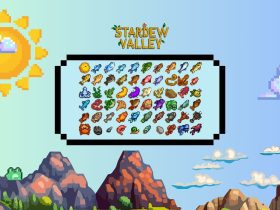The art of Age of Empires Mobile is undeniably impressive, especially considering the game’s many weather and terrain complexities. Age of Empires Mobile brought the IP to phones, and its art team had a good number of hurdles to overcome.
Age of Empires Mobile was released earlier this year, hitting the mobile market in October. Though it isn’t the first time the franchise has been on pocket devices, the IP has had a long absence from such platforms—and technology has come a long way in the interim. To learn more about how AoEM portrays history through art, while delivering some high-end graphics for the mobile scene, Game Rant caught up with the title’s art team.

Related
Age of Empires Mobile: How to Get More Gold
Gold is an essential upgrade material in Age of Empires Mobile, and you need to start farming it as soon as possible with these surefire methods.
How Age Of Empires Was Brought To Mobile
Nailing Down The Style
When talking about the game’s design philosophy, much was illuminated by the discussion around the big battles of Age of Empires Mobile. When it came to designing these mass fights, the team had to balance realism with performance and visual clarity.
“To solve this, we focused on simplicity for clarity. The art team reduced unnecessary visual clutter while maintaining a high-quality aesthetic. However, simplifying too much could make things look cartoonish, so we opted for simplifying structures while building upon realistic textures to aid visual clarity through design. A lot of the heavy lifting was done by our UX and programming teams. For instance, our UX team created a feature where players can drag the hero portraits on the right side of the screen to quickly find their units. It’s a simple but effective solution.”
The team went on to describe the performance solutions behind portraying Age of Empires Mobile‘s mass combat, mentioning optimization techniques such as “dynamically adjust[ing] the model quality based on the player’s device specifications”. With this method, when a large number of troops are on-screen, the “lowest level of detail models will be automatically rendered to ensure a smooth framerate.”
.
Despite some simplification, the game maintains a level of realism. The art team noted that the prestige inherent to the Age of Empires series encouraged them to struggle against greater and greater artistic challenges.
“Since we were focusing on history, realism was a must. The 2D style that was popular at the time just wasn’t going to cut out for the immersive experience we had in mind. So, we took the leap and decided to go full 3D. Most mobile strategy games were 2D or 2.5D back then, but we embraced the challenge. It meant higher costs, intense performance requirements for rendering all those 3D assets on mobile devices, and basically pioneering a new path for mobile strategy games. But, given the nature of the IP, realism and depth were essential. We wanted to give players a mind-blowing visual experience. While the challenges were real, they also got us really excited. Our team’s experience in 3D game development gave us the confidence to break new ground.”
The Technical Challenges Of Terrain And Weather
The art team called the terrain of Age of Empires Mobile a “big challenge,” down in large part to the vast scale of the game’s map. The flat land proved a particular bugbear, as they had to develop a new system for vegetation growth in a strategy game.
“For instance, in a typical AAA game, you might determine where to place vegetation based on elevation, slope, and underlying materials. But with our flat terrain, these rules were useless. So, we had to design a completely new set of rules tailored specifically for a strategy game. It was a huge challenge and we were basically starting from scratch.”
Weather was less of an issue for the art team, but there was a jarring effect when weather collided with the game’s grid-like terrain. The art team sought to “minimize the grid-like appearance while without compromising gameplay clarity.”













Leave a Reply